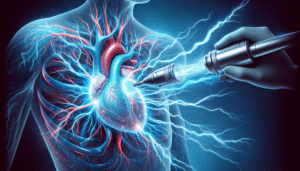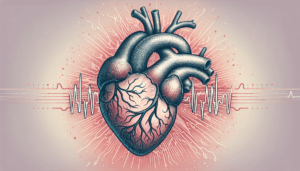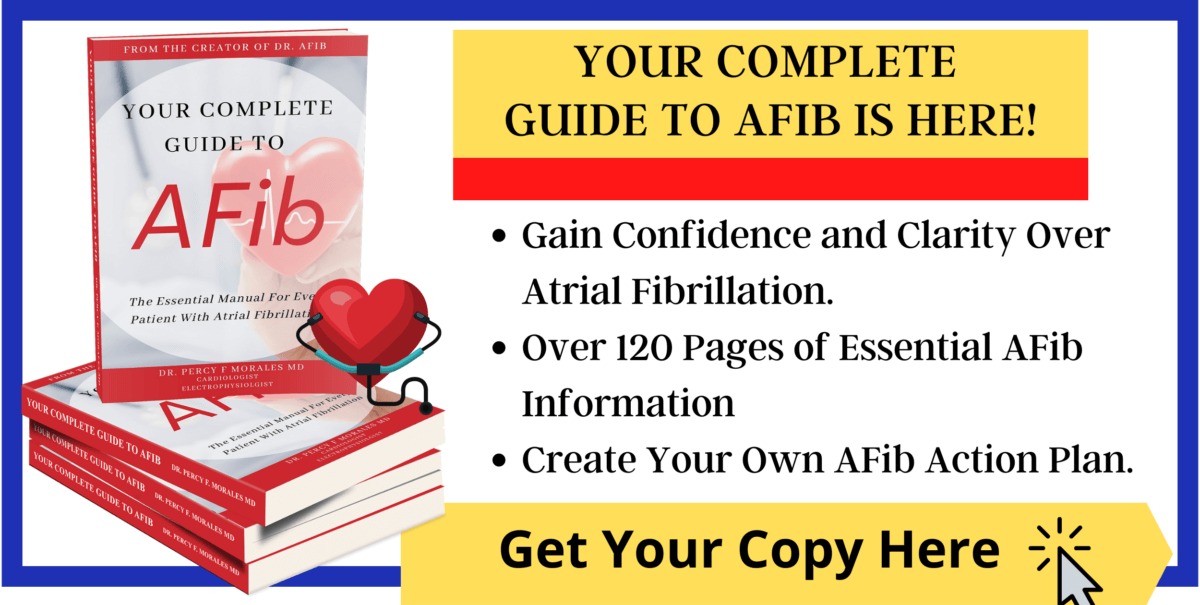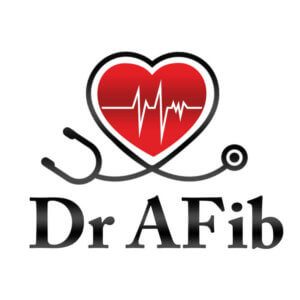AFib and coronary artery disease are two very common heart conditions. Coronary artery disease (CAD) is the most common cardiovascular disease, while atrial fibrillation (AFib) is the most common cardiac arrhythmia. Still, there’s a great deal of misunderstanding on how coronary artery disease and atrial fibrillation relate to each other and how to manage patients that may have both conditions.
Coronary artery disease is the leading cause of death in the United States in both men and women.
CAD occurs when the arteries that supply blood to heart muscle become hardened and narrowed. This is due to the buildup of cholesterol and plaque on their inner walls. Over time, CAD can weaken the heart muscle and contribute to chest pain, heart failure, arrhythmias, and heart attacks.
Both diseases share associated risk factors – hypertension, diabetes mellitus, sleep apnea, obesity, and smoking. Moreover, inflammation plays a causative role in both diseases. The prevalence of CAD in patients with AF ranges from 17% to 46.5% while the prevalence of AF among patients with CAD is estimated from 0.2% to 5%. These shared risk factors and statistics make it that much more important to be regularly screened for coronary artery disease if you do have AFib
With that being said, although both are considered heart disease, having AFib does not guarantee you will or will not also have coronary disease, and vice versa. Atrial fibrillation is an electrical disease of the atria and coronary disease is a structural disease of blood vessels.
Another confusing factor is that AFib can cause symptoms similar to those of coronary disease.
AFib can present as chest pain, shortness of breath, arm or jaw pain and near passing out, but so can CAD. For example, a patient with AFib can look like they are having a heart attack even though their arteries may be smooth and clear.
If you are diagnosed with CAD and undergo procedures such as coronary bypass surgery or have stents placed in your heart but develop AFib afterward, the medications used to treat your conditions may vary. If you find that you have both conditions, your heart will need to be managed by your doctor using various strategies to control symptoms.
The most common medication used to control symptoms are beta blockers such as metoprolol, propranolol, or carvedilol just to name a few. These types of medications help with slowing down your heart rate. A small portion of these blood pressure medications can help reduce symptoms as well. Some stronger medications that are used for atrial fibrillation fall under the category of antiarrhythmics, which may put you at increased risk of complications for if you have coronary artery disease or have had coronary bypass surgery. Most people who have coronary heart disease are not typically candidates for some types of antiarrhythmic medications due to increased risks for side effects.
Treating AFib often requires the use of anticoagulant drugs.
An AFib patient with a stent faces the problem of having to take two or three drugs that block normal blood clotting–one (or two) for the stent and then one for the AFib. This places you at greater risk for bleeding but is often unavoidable.
Blood-thinning medications such as Aspirin, Plavix, or Brilinta are common for those who have had stents placed inside of their heart. These medications help keep stents open but tend to affect platelets, which are little tiny cells that help blood clot. The medication essentially keeps your blood thin by blocking those little platelets. However, even though they work well for opening stents, they don’t work as well for reducing the risk of a stroke from atrial fibrillation. In order to reduce the risk of stroke, people tend to require stronger blood thinners. Anticoagulation drugs are medications such as Warfarin, Xarelto, Eliquis, and Pradaxa which work differently than the medications that people are prescribed with stents. The meds for atrial fibrillation actually affect these tiny little proteins that help clot your blood.
As mentioned above, if you are first diagnosed with atrial fibrillation and are already taking medications like Plavix for your CAD, you may also need to be on other blood thinners for your risk of stroke. There are different types of blood thinners for stents and coronary artery disease than there are for atrial fibrillation. All work differently not only keeping your stents open but also to help reduce the risk of stroke.
Being on multiple blood thinners makes your blood very thin and causes these people to have higher risks of bleeding complications. Fortunately, when patients are on medications for stenting, depending on when the stent was put in, some of the blood thinners can be decreased. As always, discuss the risks and benefits of your treatment and medications with your doctor, to decide which blood thinners are needed for your treatment.
The Best Atrial Fibrillation Book
Your Complete Guide To AFib: The Essential Manual For Every Patient With Atrial Fibrillation

Shop AFib Products on Amazon
KardiaMobile 6-Lead Personal EKG Monitor – Six Views of The Heart – Detects AFib and Irregular Arrhythmias – Instant Results in 30 Seconds – Works with Most Smartphones - FSA/HSA Eligible
13% Off
KardiaMobile 1-Lead Personal EKG Monitor – Record EKGs at Home – Detects AFib and Irregular Arrhythmias – Instant Results in 30 Seconds – Easy to Use – Works with Most Smartphones - FSA/HSA Eligible
$79.00 (as of June 3, 2025 14:09 GMT -06:00 - More infoProduct prices and availability are accurate as of the date/time indicated and are subject to change. Any price and availability information displayed on [relevant Amazon Site(s), as applicable] at the time of purchase will apply to the purchase of this product.)
Apple Watch Series 9 [GPS 41mm] Smartwatch with Storm Blue Aluminum Case with Silver Sport Band M/L. Fitness Tracker, Blood Oxygen & ECG Apps, Always-On Retina Display
(as of June 3, 2025 07:32 GMT -06:00 - More infoProduct prices and availability are accurate as of the date/time indicated and are subject to change. Any price and availability information displayed on [relevant Amazon Site(s), as applicable] at the time of purchase will apply to the purchase of this product.)
Fitbit Sense 2 Advanced Health and Fitness Smartwatch with Tools to Manage Stress and Sleep, ECG App, SpO2, 24/7 Heart Rate and GPS, Shadow Grey/Graphite, One Size (S & L Bands Included)
20% Off
OMRON 2-in-1 Upper Arm Blood Pressure Monitor & 1-Lead EKG Monitor - Clinically Validated Blood Pressure Arm Cuff & Machine - Use OMRON Connect App
17% Off
Samsung Galaxy Watch 6 44mm Bluetooth Smartwatch, Fitness Tracker, Personalized HR Zones, Advanced Sleep Coaching, Heart Monitor, BIA Sensor, Health Wellness Insights, Big Screen, US Version, Graphite
52% Off $329.99 (as of June 3, 2025 19:41 GMT -06:00 - More infoProduct prices and availability are accurate as of the date/time indicated and are subject to change. Any price and availability information displayed on [relevant Amazon Site(s), as applicable] at the time of purchase will apply to the purchase of this product.)
Natural Rhythm Triple Calm Magnesium 150 mg - 120 Capsules – Magnesium Complex Compound Supplement with Magnesium Glycinate, Malate, and Taurate. Calming Blend for Promoting Rest and Relaxation.
$20.77 ($0.17 / Count) (as of June 3, 2025 16:20 GMT -06:00 - More infoProduct prices and availability are accurate as of the date/time indicated and are subject to change. Any price and availability information displayed on [relevant Amazon Site(s), as applicable] at the time of purchase will apply to the purchase of this product.)
Pure Encapsulations Magnesium (Glycinate) - Supplement to Support Stress Relief, Sleep, Heart Health, Nerves, Muscles, and Metabolism* - with Magnesium Glycinate - 180 Capsules
$44.60 ($0.25 / Count) (as of June 3, 2025 07:32 GMT -06:00 - More infoProduct prices and availability are accurate as of the date/time indicated and are subject to change. Any price and availability information displayed on [relevant Amazon Site(s), as applicable] at the time of purchase will apply to the purchase of this product.)
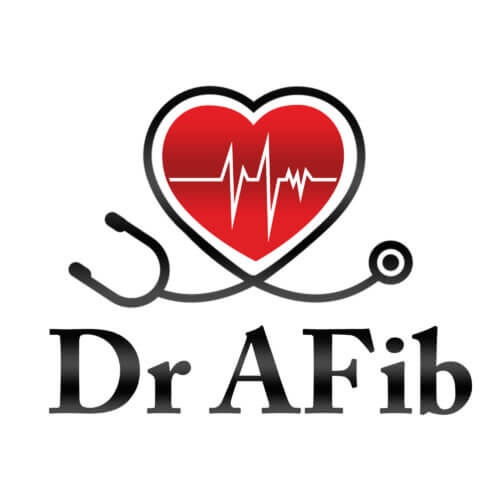














![Apple Watch Series 9 [GPS 41mm] Smartwatch with Storm Blue Aluminum Case with Silver Sport Band M/L. Fitness Tracker, Blood Oxygen & ECG Apps, Always-On Retina Display #1](https://m.media-amazon.com/images/I/311xwtp4mFL._SL100_.jpg)
![Apple Watch Series 9 [GPS 41mm] Smartwatch with Storm Blue Aluminum Case with Silver Sport Band M/L. Fitness Tracker, Blood Oxygen & ECG Apps, Always-On Retina Display #2](https://m.media-amazon.com/images/I/41j+8AaUGsL._SL100_.jpg)
![Apple Watch Series 9 [GPS 41mm] Smartwatch with Storm Blue Aluminum Case with Silver Sport Band M/L. Fitness Tracker, Blood Oxygen & ECG Apps, Always-On Retina Display #3](https://m.media-amazon.com/images/I/41jIyxZitnL._SL100_.jpg)
![Apple Watch Series 9 [GPS 41mm] Smartwatch with Storm Blue Aluminum Case with Silver Sport Band M/L. Fitness Tracker, Blood Oxygen & ECG Apps, Always-On Retina Display #4](https://m.media-amazon.com/images/I/41IpNJERjCL._SL100_.jpg)
![Apple Watch Series 9 [GPS 41mm] Smartwatch with Storm Blue Aluminum Case with Silver Sport Band M/L. Fitness Tracker, Blood Oxygen & ECG Apps, Always-On Retina Display #5](https://m.media-amazon.com/images/I/31o17yhfYpL._SL100_.jpg)
































